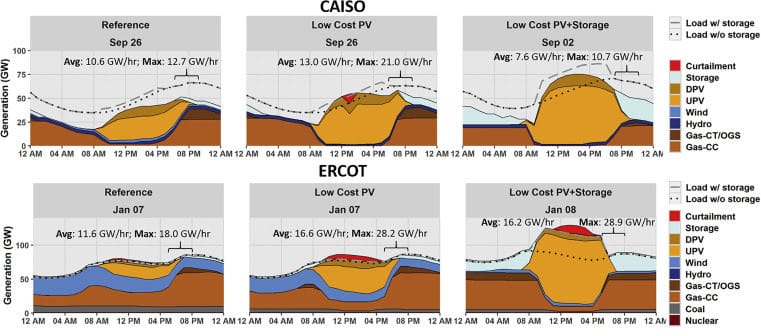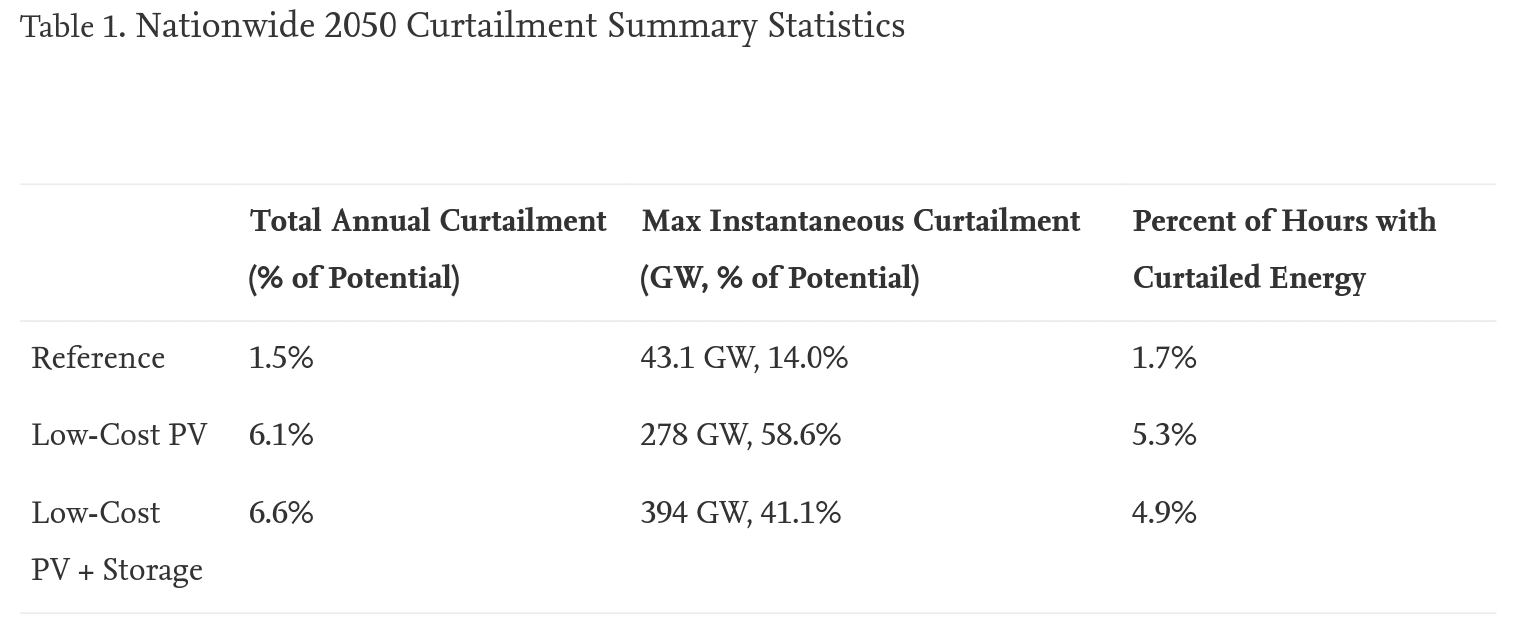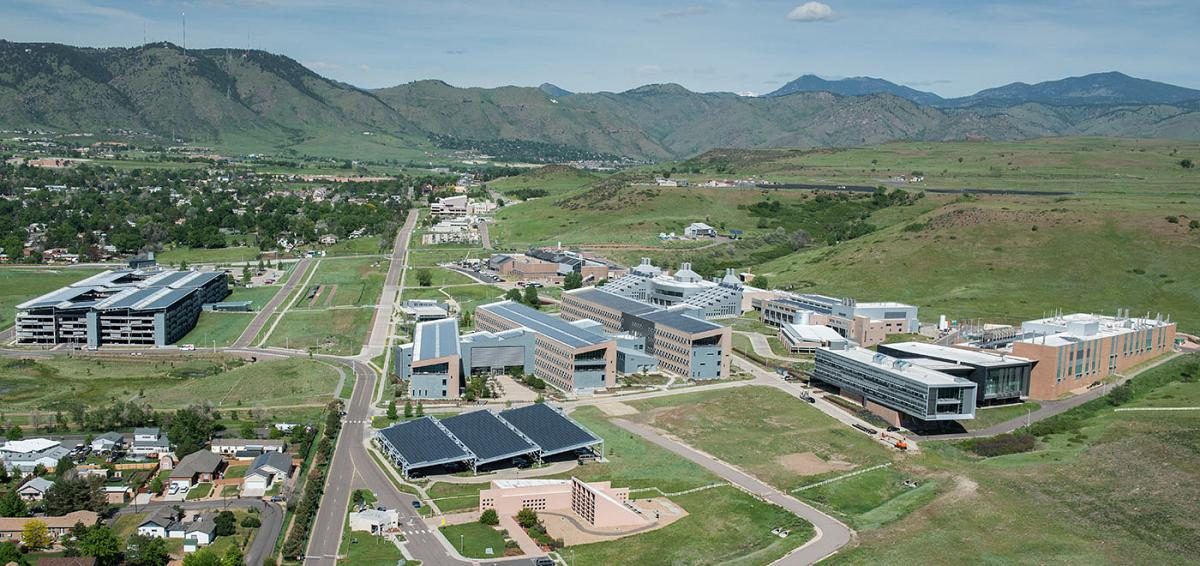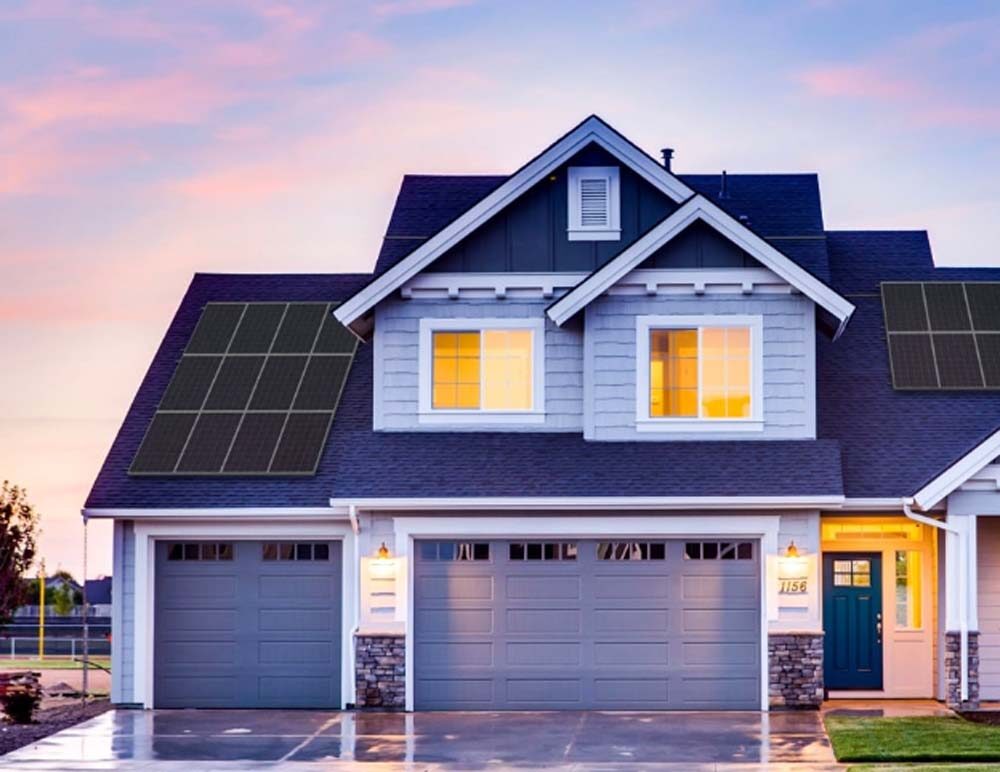Modeling done by researchers from the Strategic Energy Analysis Center at the National Renewable Energy Laboratory (NREL), in Sunny with a Chance of Curtailment: Operating the US Grid with Very High Levels of Solar Photovoltaics, shows how the three main power grids in the United States might run on the highest penetration solar days (90%+ of demand being met by solar), when 55% of annual electricity use is met with solar photovoltaics. The hourly model also shows how much extra solar electricity we’d have to do something with, when we’d have it (springtime), and how it might affect (lower) pricing of competing electricity generation sources.

The modeling also looks at other, lesser, solar scenarios – but not us. The 55% scenario, titled “Low-Cost PV + Storage”, considers energy storage pricing at $97/kWh capacity and solar electricity at 2¢/kWh without incentives. There is 1,618 GW of solar PV and 346 GW of storage deployed.
The crux of the story is how do we keep the system running safely, and in a relatively economically sound manner, while also adding in sources of intermittent clean electricity. The authors suggest that high levels of control and coordination with other dispatchable resources and the energy storage would be needed, and solar module level controls would be greatly appreciated (others have modeled 100% of rooftops with solar power and thought the same). In fact, as the penetrations got the highest (top row on right below) – some of the sudden shifts would get pretty extreme. Modern lithium ion technology can instantaneously react, and can handle it – it will be required.

The greatest mitigation of these ramps will occur once energy storage is deployed in massive amounts in the Low Cost PV+Storage scenario, right row above and same in image above that, where you note a flat smooth output from fossil sources.
The economically challenging days – low electricity priced days driving by heavy volumes of generation – are almost entirely caused by high levels of solar power, with a heavy amount of this being in the spring periods of temperate clear days, and lower electricity demand. And while there are hours in which 41% of all solar electricity being generated (remember 1,618 GW installed) would potentially not be used, the high solar+storage scenario only saw that in 4.9% of all hours (1.1 hours/day), representing 6.6% of all electricity generated (below chart).

There is research that says if we design for solar curtailment, we can monetize it and deploy more solar due to this. Other documents see that oversized solar plus with power could meet 80% of our electricity with 12 hours of energy storage. NREL used a commercially available hourly modeling tool here to look at the whole of the United States and figure out what hours thirty years into the future might have cheaper electricity. Makes me think that 80% renewables is cake, and we ought let the extremists argue over the rest.
This content is protected by copyright and may not be reused. If you want to cooperate with us and would like to reuse some of our content, please contact: editors@pv-magazine.com.








That’s Golden, not Boulder.
Interesting, instead of the boast in the 1960’s that nuclear power would be to cheap to meter, we get to the point of 50% solar PV power and it would be actually to cheap to meter. The thermal solar plants put online with energy storage has shown a way of storing heat using salts, metals in super insulated tanks that would hold the heat for months perhaps years at a time. In the North East, wouldn’t it be nice to take a clear summer days power and convert it into heat to store for winter heating of buildings.
The World has spent hundreds of billions of dollars over the last three or four decades searching for that “repeatable” above unity (fusion) reaction that will create “unlimited” power for electricity. Unfortunately ITER still has “magnetic bottle” containment problems, that may take another 30 plus years to solve. In the meantime WE have this technology, that uses cast off photons from our sun a fusion reactor in its own right 93 million miles away. So, there is no magnetic bottle problem with the sun. Now the technology is here and getting cheaper by the year, to use these fusion derived photons to power our homes and businesses. Well, there ain’t no power when the sun don’t shine, is a lot easier to fix than a magnetic bottle. The battery technology is getting better and new manufacturing processes are enabling new chemistries to be manufactured like bullets coming off the assemble line. EVERY one of us can use fusion to power our homes and businesses today, without a magnetic bottle and with our own energy storage systems. Why does this have to be so hard?
“There is research that says if we design for solar curtailment, we can monetize it and deploy more solar due to this. Other documents see that oversized solar plus with power could meet 80% of our electricity with 12 hours of energy storage.”
That right there tells me this, letting the grid keep the overgeneration online and using it to charge distributed home and business energy storage systems with power that is (negative)/MWh of generation could “monetize” commercial and Industrial businesses, with reductions on the often onerous demand charges that drive monthly electric bills sky high. Then anyone who would install 12 hrs. of energy storage could reap the benefits of non-fueled generation.